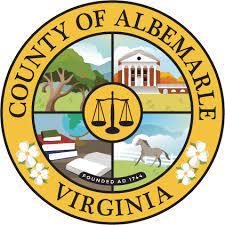Last week, Albemarle County became the latest locality in the area to adopt a plan to prepare for natural disasters and other emergencies. The Thomas Jefferson Planning Districts maintains and updates the Regional Natural Hazard Mitigation Plan, a document required by the federal government in order to qualify for certain grants and other funding sources. (read the plan)
The plan also serves as a guide for how the county uses its resources.
“It covers from the preventative measures that we might be able to take to actual response strategies including staffing our Emergency Operations Center, recovery, said John Oprandy, Albemarle County’s Deputy Chief of Emergency Management with the Fire and Rescue.
Community Safety is the number one goal in the strategic plan adopted by the Board of Supervisors last October. One Supervisor pointed out that many of the mitigation steps serve multiple purposes such as advancing the county’s climate action plan.
“When I look at the list of items that we either have in the works that we are working on or have on a to-do list, it does connect to our budget discussion and our monies,” said Supervisor Diantha McKeel.
The section for Albemarle County has dozens of mitigation steps ranging from AHE1:
“Increase the number of trained emergency responders, both staff and volunteers. Establish a minimum ICS/emergency management training/certification requirement for essential County staff. Train/educate 70% of identified staff to minimum qualifications. Conduct disaster tabletop and/or full-scale scenarios on an annual basis to exercise skills/ processes.”
To ALI6:
“Promote increased tree canopy in urban areas to reduce heat island effect.”
Albemarle has now joined all other surrounding counties and four towns in adopting the plan. Charlottesville City Council deferred a vote in early April after Mayor Lloyd Snook asked for more information.
“We are working with the City of Charlottesville to reintroduce the plan on a City Council agenda in the coming weeks,” said Ian Baxter, a planner with the TJPDC.

Before you go: The time to write and research of this article is covered by paid subscribers to Charlottesville Community Engagement. In fact, this particular installment comes from the May 10, 2023 edition of the program. To ensure this research can be sustained, please consider becoming a paid subscriber or contributing monthly through Patreon.










